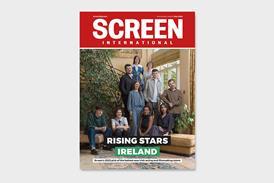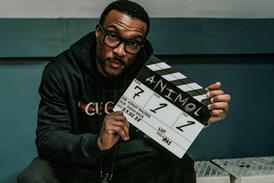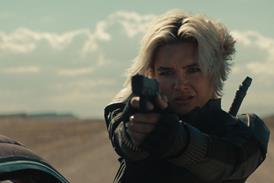
In a keynote address at Sunday’s (November 12) IDFA distribution panel Neon’s president of distribution Elissa Federoff gave a surprisingly upbeat assessment of prospects for the US and global independent documentary sector.
While acknowledging the market is “down” and that there are fewer titles being released that in the pre-Covid period, Federoff claimed that “in many ways, the box office is healthier than ever”.
Box office has decreased by around 20% since 2019 which the executive suggested was largely because there are 20% fewer titles being released.
“We have seen titles doing the best they’ve ever done before in this ‘unhealthy’ marketplace,” Federoff insisted, proclaiming her continuing faith in the theatrical experience.
“Now we are emerging from the pandemic we are seeing audiences returning to the theatres, some in droves; certainly the under-35 audience is really healthy in the US. We are also seeing a much more discerning audience, one that wants authenticity in their marketing and they want an event out of their theatrical release, something they cannot get at home.”
Federoff talked of Neon’s determination to give all its feature documentaries “a robust and dynamic theatrical launch”. She noted a cinema release remains a viable way to set up a non-fiction film for “every window in its life cycle – awards, VOD and streaming”.
The Neon executive emphasised that when it comes to documentaries many of the same market trends still apply: distributors need to find stories that are “stranger than fiction”, for example Three Identical Strangers or Kaouther Ben Hania’s Cannes award-winning Four Daughters which screens in the IDFA market for The Party Film Sales and is being released in the US by Kino Lorber.
Not too long ago, Federoff noted, $1m was considered a successful box office haul for a documentary in the US market. That figure has risen sharply as documentaries have moved increasingly closer to the mainstream and are now considered entertainment.
“When the streamers showed up, they created an opportunity for larger budget for all of these films,” Federoff said. “They added distribution opportunities and production dollars to a market and profession that was always seen as very difficult and limited. But then things got inflated, like everywhere across the industry. Streamers drove up non-fiction prices at festivals and created a bubble during the pandemic.”
As a result of streamers overspending, there has been a readjustment, prices have dropped, and buyers are increasingly focused on true crime, celebrity, and sports documentaries.
Nonetheless Neon continues to deliver standout hits. One notable recent success was Brett Morgen’s David Bowie film and Cannes 2022 selection Moonage Daydream, which the company released in tandem with Universal.

“We did a global marketing campaign… we mastered it in Imax and the movie came out in Imax theatres across the world,” Federoff said.
In its first weekend of theatrical release the film made $1.2m alone and ended up grossing $4.5m in the US. It also became the highest grossing documentary globally since the pandemic.
Neon also did strong business with archive-driven volcano documentary Fire Of Love which it released together with National Geographic. “What we did with this title was we spent a good deal of our marketing money with the actual movie circuit, which is something that happens a lot in the US where we buy trailer placement and media packages.”
Neon “followed the path” of [animated mockumentary] Marcel The Shell. “We trailered on that film all summer long and let the buzz and conversation around it happen,” Federoff said of a documentary which posted tickets sales in excess of $1m.
For Laura Poitras’s 2022 Venice Golden Lion winner All The Beauty And The Bloodshed, Neon used awards buzz to drive audiences.
”Neon is able to exist independently in spite of these streaming ebbs and flows because we take chances, spend efficiently and ‘eventise’ in a way streamers don’t,” Federoff said.
Post-pandemic, feature documentaries have struggled to cut through the theatrical marketplace noise in the way they did in 2019, when “the summer…saw some of the best success for the theatrical doc that has ever existed”.
Ticket sales in that period were further boosted because there were so many feature documentaries in circulation. “All these wonderful non-fiction films in the marketplace at the same time… They’re all working together to create a habituated audience that wants to see one [documentary] and come back for the next,” the executive noted.
“That is one fault of the box office [now]: not having more titles in it. When we have more titles that we can advertise across, that we can trailer across, that audiences can get really excited about, that is when we see our marketplace doing better,” Federoff said.
She acknowledged that older art house audiences were slow to return to cinemas post-Covid and were changing their viewing habits and watching more content on streaming platforms, while many art house cinemas were closing down.
At an IDFA where other attendees have bemoaned the softness of the current theatrical marketplace, the Neon distribution president struck an insistently optimistic note.
“It’s not all bad news,” she said. “What we are seeing is the young audience is back and we have to figure out what in the doc space needs [to be done] to attract young viewers… People have to re-invent because the old system is not working in the same way.”
She cited Jazmin Jones’s Seeking Mavis Beacon, Neon’s detective story about the young Black woman who became the face of software programme Mavis Beacon Teaches Typing before vanishing, as an example of a documentary feature perfectly tailored for Gen Z and Millennial viewers. Asif Kapadia’s upcoming documentary sci thriller 2073 is another Neon title she believes will reach younger viewers.
“It was during the pandemic that Neon looked around and saw what streamers were doing when theatres were not open [and] we realised we should be making these films, not just releasing them,” the Neon executive stated of her company’s shift in strategy.
“It is easy to look at things and feel discouraged but if you take the long view on independent film in general, it is in a substantially better place than it was a decade ago,” Federoff said.



































No comments yet